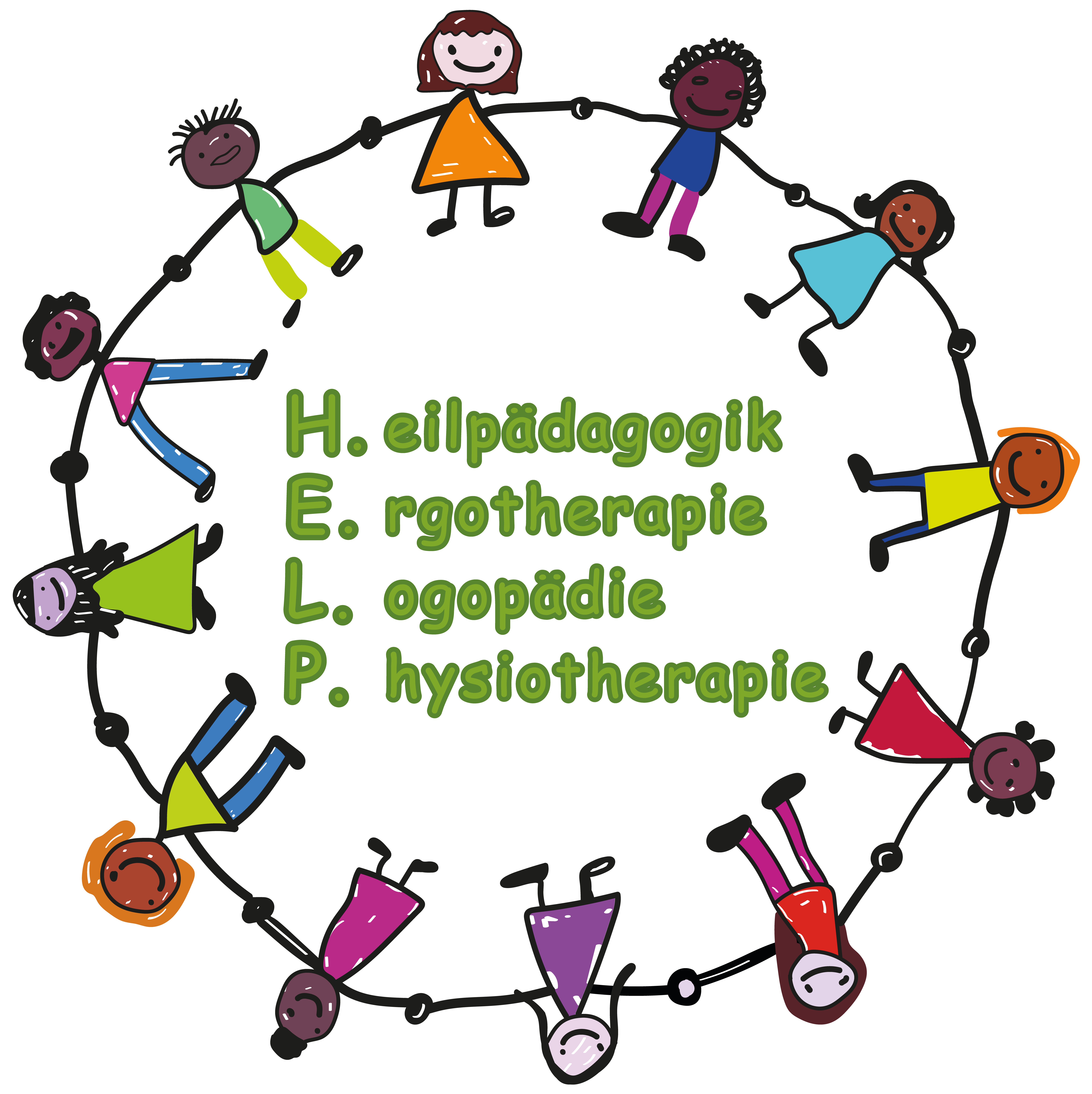Unsere Leistungen
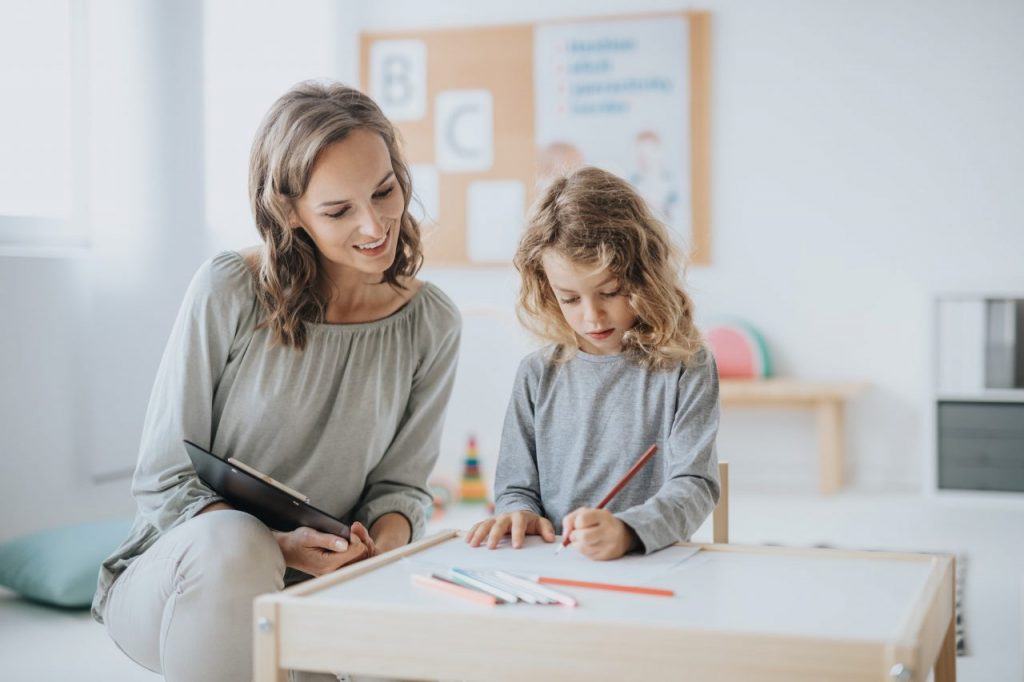
Heilpädagogische Förderung
Die Heilpädagogik ist eine Fachrichtung der Pädagogik, in der die Ganzheit des Patienten im Fokus steht. Unter „Heil“ ist etymologisch „ganz“ zu verstehen.
Quelle: „Berufs- und Fachverband Heilpädagogik e.V.“
Ganzheitlichkeit bedeutet, dass sich die heilpädagogische Unterstützung sowohl auf das Kind als auch auf dessen Umfeld bezieht.
Die heilpädagogische Frühförderung (HP) kommt in der frühen Kindheit (ab Geburt bis zum Schuleintritt) zum Einsatz, wenn bestimmte Fähigkeiten bzw. Fertigkeiten von Kindern im Säuglings-, Kleinkind- und/oder Vorschulalter nicht altersgerecht entwickelt sind.
Der Schwerpunkt unserer heilpädagogisch/psychologischen Förderung liegt im kognitiven und sozial- emotionalen Entwicklungsbereich. Als unsere Aufgabe sehen wir die Förderung von Kindern mit Verhaltensauffälligkeiten und Entwicklungsverzögerungen sowie das Vermitteln von Strategien zum Leben mit Beeinträchtigungen.
Ziel ist es, das Kind an seinem individuellen Entwicklungspunkt im Leben abzuholen, es in seiner persönlichen Entwicklung zu begleiten und hierbei mit Blick auf sein gesamtes (soziales) Umfeld gemeinsame Entwicklungsschritte zu meistern.
Indikation Heilpädagogik
- Auffälligkeiten im sozio- emotionalen Bereich (soziale Interaktion und Kommunikation, Regelakzeptanz, provokantes Verhalten, Konfliktlösung, aggressive Verhaltensweisen, …)
- Einschränkungen in der emotionalen Entwicklung (Emotionswahrnehmung, Empathie, Frustrationstoleranz, Selbstbewusstsein, Selbstwirksamkeit, Resilienz, …)
- Auffälligkeiten in der kognitiven Entwicklung (Konzentration, Ausdauer, Gedächtnis, Merkfähigkeit, Problemlösungsfähigkeit, Handlungsplanung, …)
- Einschränkungen im Verhalten (Tics, Selbstständigkeit, Trockenwerden, ADL- Funktionen, …)
Ergotherapie
Die Ergotherapie – abgeleitet vom Griechischen „ergein“ (handeln, tätig sein) – geht davon aus, dass „tätig sein“ ein menschliches Grundbedürfnis ist und dass gezielt eingesetzte Tätigkeiten eine therapeutische Wirkung haben. Wir unterstützen und begleiten Kinder im Alter von 0-7 Jahren, die in ihrer Handlungsfähigkeit eingeschränkt oder von Einschränkung bedroht sind und/oder ihre Handlungsfähigkeit erweitern möchten.
In der Ergotherapie werden spezifische Aktivitäten, Umweltanpassung und Beratung gezielt und ressourcenorientiert eingesetzt.
Quelle „DACHS-Definition“ der Ergotherapie, 2007
Indikation Ergotherapie
- Entwicklungsrückstand und Entwicklungsverzögerungen
- Wahrnehmungsstörungen (Sensorische Integrationsstörung)
- Regulationsstörungen (z.B. Schreibabys)
- Störungen der Exekutiven Funktionen (Hyperaktivität, Impulsivität, Unaufmerksamkeit, …)
- ADS mit und ohne Hyperaktivität
- Auffälligkeiten in der Grobmotorik (Gleichgewicht, Ballspiel, …)
- Motorische Koordinationsstörungen
- Störungen der Finger- und Handmotorik (Grafomotorik)
- Angeborene und erworbene Erkrankungen des Nervensystems
- Autistische Spektrums Störung
- Trisomie 21
- Mentale Retardierung (Fragiles-X-Syndrom, Williams-Beuren-Syndrom, DYRK1A,
Shunt, …) - Dyspraxie
- Infantile Cerebralparese, Ataxie, …
- Querschnittsyndrom, Schädelhirntrauma
- Virale und bakterielle Infektionen des Gehirns (Epilepsie, …)
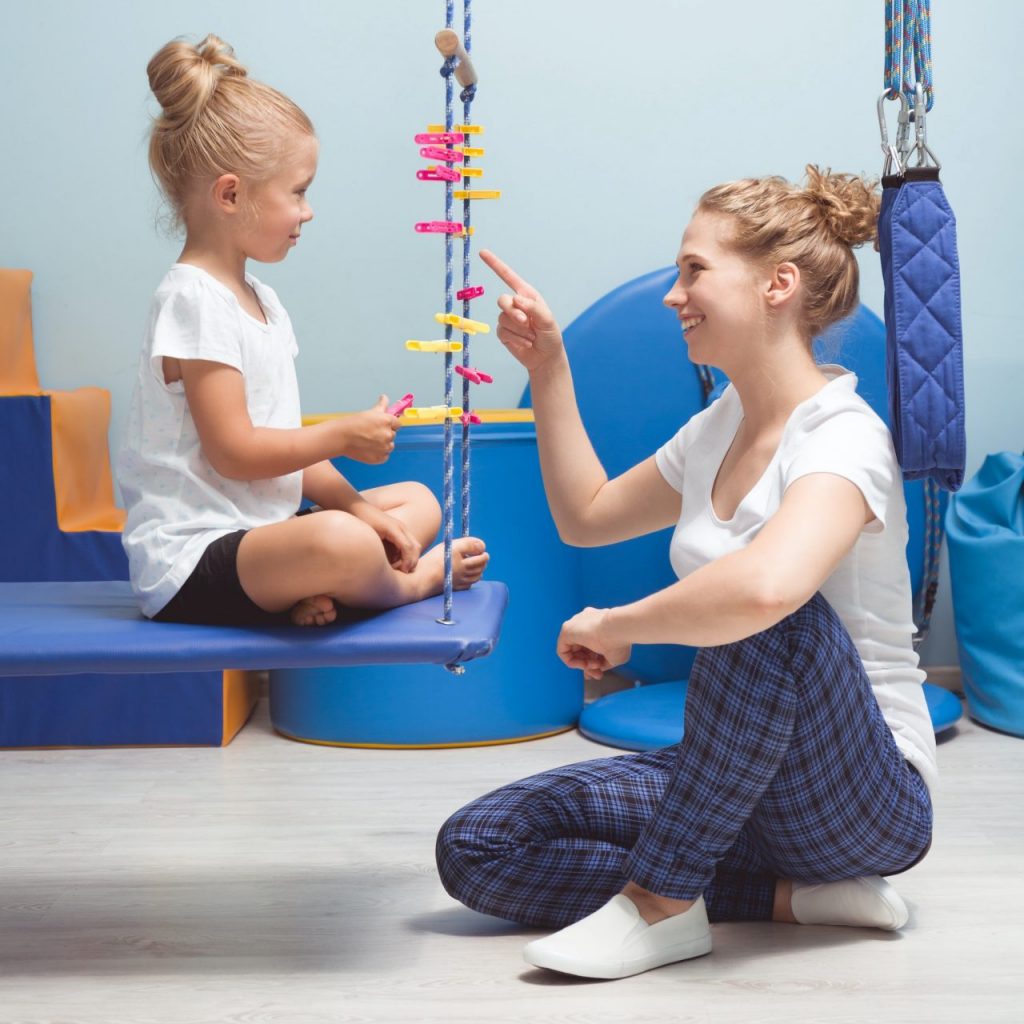
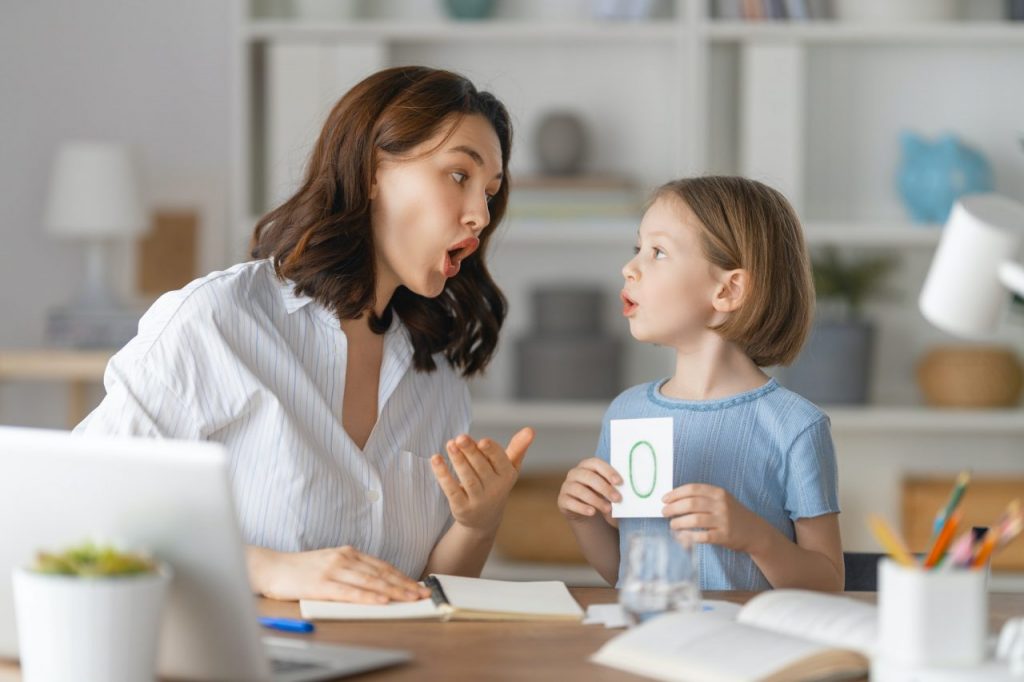
Logopädie
Die Logopädie (wörtlich übersetzt „Sprecherziehung“, abgeleitet vom altgriechischen „logos“ = „Wort“ + „paideuein“ = „erziehen“) ist eine medizinisch-therapeutische Fachdisziplin, welche die Diagnostik und Behandlung von Sprach-, Sprech-, Stimm-, Schluck- und Hörstörungen umfasst.
Unser Ziel ist es, Kinder im Alter von 0-7 Jahren zu unterstützen und zu begleiten, um die Erhaltung, die Verbesserung, beziehungsweise Wiederherstellung der menschlichen Kommunikation zu gewährleisten. Die therapeutischen Maßnahmen werden dabei auf die Kinder und ihr soziales Umfeld abgestimmt.
Quelle „Deutsche Bundesverband für Logopädie e.V.“
Indikation Logopädie
- Sprachentwicklungsverzögerung
- Sprachentwicklungsstörung (Sprachverständnis, Sprachproduktion, Wortschatzdefizite, …)
- Dysgrammatismus (Verzögerung in der Grammatikentwicklung)
- Phonetisch und phonologische Störungen (fehlerhafte Artikulation oder Aussprache wie Lispeln, …)
- Verbale Entwicklungsdyspraxie (Störung der Sprechplanung)
- Myofunktionelle Störungen (Schluckstörungen, Saugstörungen, Fütterstörungen, Essstörungen, …)
- Redeflussstörungen (Stottern, Poltern, …)
- Mutismus (Sprechangst)
- Stimmstörungen (Näseln, …)
- Auditive Verarbeitungs- und Wahrnehmungsstörungen
- Neurologisch bedingte Sprech-, Sprach- und Schluckstörungen (kindliche Aphasie, …)
- Hörschädigung
- Trachealkanülenmanagement
- Unterstützte Kommunikation (z.B. bei Autismus-Spektrum-Störung, Trisomie 21, …)
- Lippen-Kiefer-Gaumen-Segelfehlbildungen (LKGS)
Physiotherapie/Krankengymnastik
Der Begriff Physiotherapie, auch Krankengymnastik, stammt aus dem Altgriechischen „phýsis“ (Natur und Körper) und „therapeía“ (Pflegen, Heilen) und heißt grob übersetzt „Wiederherstellen der natürlichen Funktionen“. Im Mittelpunkt der Physiotherapie stehen die Vermeidung von Funktionsstörungen des Bewegungssystems sowie die Erhaltung und Wiederherstellung der natürlichen Bewegungsabläufe der Kinder.
Quelle „Deutscher Verband für Physiotherapie (ZVK) e.V.“
Ziel der Physiotherapie ist es, den Kindern Freude an der Bewegung zu vermitteln und sie bei einer harmonischen Bewegungsentwicklung zu unterstützen. Die individuellen Bedürfnisse jedes einzelnen Kindes stehen dabei im Vordergrund.
Indikation Physiotherapie
- Abweichende motorische Entwicklung
- Neurologische Erkrankungen (ICP, Plexusparese, Shunt, …)
- Orthopädische Probleme (Sichelfuß, Skoliose …)
- Bronchial- und Atemwegserkrankungen
- Auffälligkeiten in der Körperwahrnehmung (taktil-kinästhetischer, vestibulärer Entwicklungsbereich, …)
- Probleme in der Bewegungsplanung bzw. im Bewegungsablauf
- Asymmetrie, Schädelasymmetrie
- Schiefhals
- Verminderte oder erhöhte Muskelspannung (Tonusregulationsstörungen, …)
- Muskelerkrankungen
- Gleichgewichtsstörungen, motorische Ungeschicklichkeit (Koordinationsschwierigkeiten, …)
- Haltungsschwäche (Einschränkung in der Körperhaltung, …)
- Rheumatische Erkrankungen
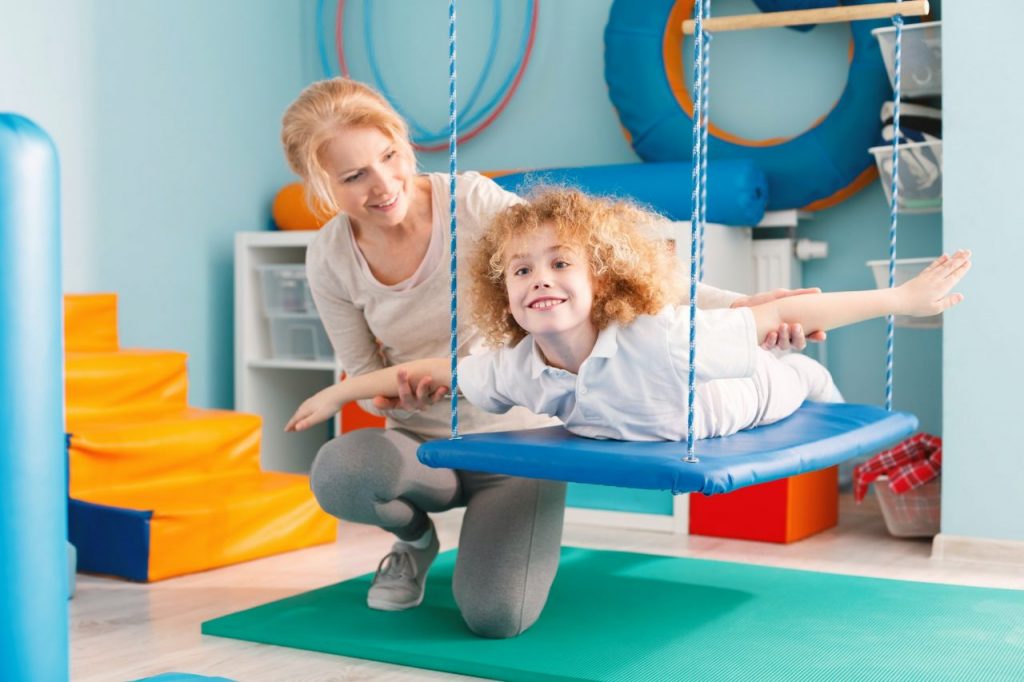
Jetzt kontaktieren!
Noch offene Fragen?
Kontaktieren Sie uns
Haben Sie Fragen zu unseren Frühförderungsangeboten? Dann zögern Sie nicht und nehmen Sie Kontakt zu uns auf. Unser Team steht Ihnen gerne für Ihre Fragen zur Verfügung und unterstützt Sie bei der Förderung Ihres Kindes.
089 / 55 05 61 63
Mo.-Fr.: 7:30 Uhr bis 17 Uhr
Samstags 07:30 - 16 Uhr
Mo.-Fr.: 9:00 Uhr bis 15:00 Uhr
